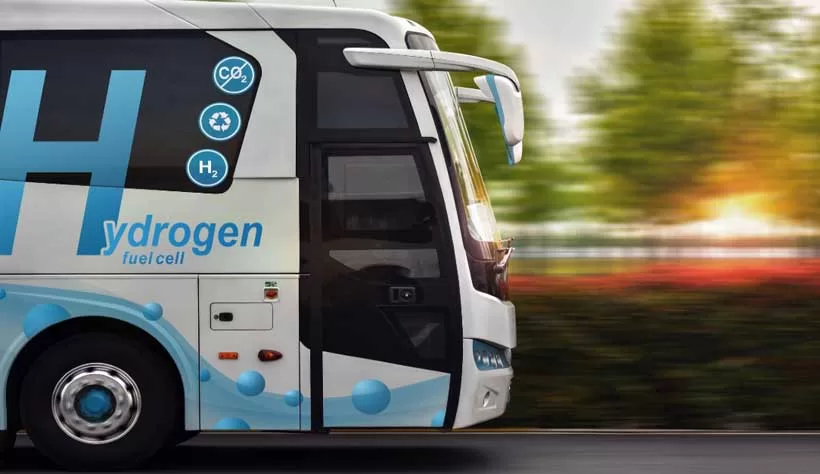The hydrogen pilot mechanism will collect, process and give access to information on demand and supply for renewable, low-carbon hydrogen and derivatives, allowing European off-takers to match with both European and foreign suppliers. It will collect and process market data on development of hydrogen flows and prices. A procurement process has started today to find a service provider to develop an IT platform to operate the pilot mechanism. The Commission plans to sign a contract by the end of this year, so that it can start its operations by mid-2025.
In Europe the first large-scale electrolysers are already under construction and the first off-take agreements have been signed. Improving demand visibility between suppliers and consumers will help accelerate final investment decisions in Europe and contribute to securing off-take agreements. Hydrogen will play an important role in achieving our Green Deal targets, phasing out Russian fossil fuels, and supporting the decarbonisation and competitiveness of European industry.
The pilot hydrogen mechanism forms part of the Commission’s ongoing work to establish a European Multiproduct Platform for the joint purchase of strategic commodities, which, in the future, could cover commodities such as strategic raw materials.
Background
The EU has put in place a comprehensive and integrated regulatory framework to support the development of a fully functioning hydrogen market by 2030. The Decarbonised Gases and Hydrogen package set out clear market rules, providing legal certainty and long-term visibility to investors across the entire hydrogen value chain. On the demand side, the revised Renewable Energy Directive introduced targets for renewable hydrogen in the industry and transport sectors. The EU has also set up rules to define what renewable hydrogen is and how it can count towards these targets, and the Commission plans to propose a legal definition of low-carbon hydrogen by the end of the year. In addition, hydrogen supply chain projects are now considered of strategic interest, and thus eligible for faster permitting and other supportive measures, under the Net-Zero Industry Act.
In addition to the enabling regulatory framework, the Commission has been supporting the development of hydrogen infrastructure and related investments. The first Union list of Projects of Common and Mutual Interest under the revised TEN-E Regulation contains several hydrogen corridors that are expected to connect consumers with producers from across the EU as well as internationally. More specifically, the list gives PCI status to a set of new and repurposed pipelines, 16 large electrolysers of more than 50 MW, as well as hydrogen storage facilities and terminals.
The Commission has also established the European Hydrogen Bank to boost investments in hydrogen projects and facilitate the establishment of a full hydrogen value chain in Europe. The first domestic auction was a success, receiving 132 proposals, out of which seven have been selected to receive nearly €720 million in financial support from the Innovation Fund. The Commission plans to launch a second domestic auction by the end of this year and is working on developing possible international auctions in cooperation with the Member States.
The European hydrogen industry is investing significantly in new projects. Right now, there are 254 renewable hydrogen projects in the EU, of which 170 in operation and 84 under construction. They correspond to almost 3 GW of installed capacity. A further 8 GW of capacity are expected to come online following the implementation of the electrolyser projects selected in the first pilot auction for renewable hydrogen under the European Hydrogen Bank. However, globally only 4% of announced renewable and low-carbon hydrogen projects have reached final investment decision, and only 12% of the potential supply of clean hydrogen produced by 2030 has an identified off-taker.
Overall, approximately €18 billion has been invested in Europe from the Resilience and Recovery Facility, Member States’ schemes and several regional and innovation programmes to boost the first hydrogen production projects, support fuel switching and develop infrastructure. In addition, the Commission has approved State aid for four Important Projects of Common European Interest (‘IPCEIs’) in the hydrogen value chain, amounting to €18.9 billion. These are expected to unlock some €27 billion in private investment. The supported projects will cover the full clean hydrogen value chain – from renewable and low-carbon hydrogen production to hydrogen storage, transmission and distribution, and hydrogen application, notably in industrial sectors.
The Commission is also supporting the emergence and implementation of value chains integrating hydrogen projects through its Hydrogen Valleys Innovation Mission, with around 100 valleys worldwide already being part of the Hydrogen Valleys platform, including more than 50 in Europe. The number has doubled since the adoption of the REPowerEU Plan in May 2022.
